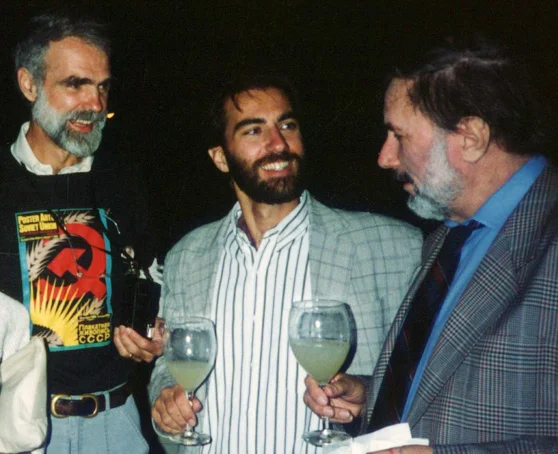COLLECTION BACKGROUND
In 1988 when Ron Miriello and Phil Risbeck contacted The Secretary of the Union of Soviet Artists, Oleg Savostuik, it was an innocent request to receive some current works of Soviet poster designers to share with Americans. It was also a way for the newly forming American Institute of Graphic Arts / San Diego, to play a part in the city-wide Soviet Arts Festival, initiated by then San Diego mayor, Susan Golding. Little was it known that the exhibition was to become the single most definitive collection of posters marking the end of the Cold War and the beginning of the cultural and political revolutionary period of “perestroika” (“restructuring”) and “glasnost” (“openness”).
In the Soviet Union the poster had always been a vital form of communication between the government and its citizens. In October, 1989, the Soviet government offered an unprecedented opportunity to U.S. citizens, a chance to view contemporary Soviet life through the gift of 75 posters, collected and curated by Mr. Savostiuk expressly for the San Diego showing.
Preparing, funding, and coordinating such an important exhibit was an epic undertaking for the newly formed AIGA/San Diego group of young designers. The arrival from Moscow, of the Secretary of the Union of Soviet Arts for the premier, his exhibition tour, and explanation of the meaning and significance packed into the posters he had meaningfully selected, immediately shifted the discussion from one of style to one of real and profound issues. The potential of art to transmit story and intention was on display in San Diego in the form of the Soviet Poster Show and in the form of the new, young chapter of AIGA.
What marked the Soviet Poster Show was its immediacy. These posters, with their strong design, dynamic graphics in vivid colors, reflected Soviet society as it is was – a society traveling a path of astonishing change. Because the posters needed to appeal to a broad segment of the population, especially younger people who had been influenced by western popular arts, Soviet graphic arts began to exhibit a refreshing individuality and exuberance that was absent for many decades. The posters were not just examples of excellence in design, but evidence of a time of great social and political changes throughout the USSR. A change that seemed in 1989, to be revolutionary, real and permanent.


